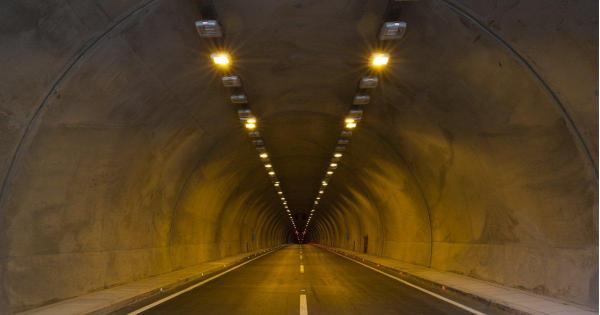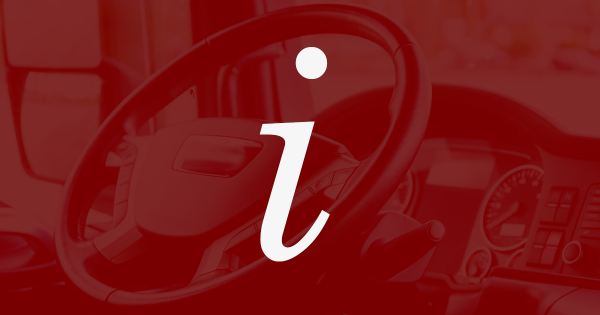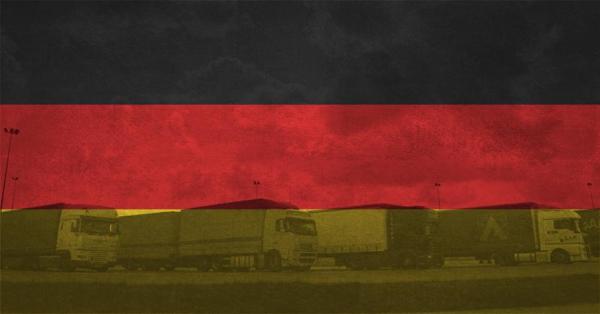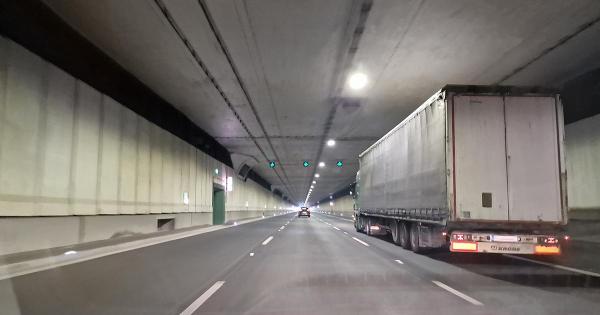
No permit means no access to the Port of Dover
In anticipation of an expected increase in weekend traffic volumes from July 13 to mid-August, M20 will be closed between Maidstone and Ashford overnight on Wednesday (10 July) to allow the Operation Brock contraflow to be deployed.
REMEMBER: no permit means no access to the Port of Dover
The system will also reduce the need for the sudden closures of the A20 Roundhill Tunnels and help keep local roads flowing more freely in busy periods.
When will the new permit system be introduced?
The permit system will be in force from 10 July, when Operation Brock is introduced on the M20 motorway in readiness for a busy summer getaway period. It will be used as soon as Dover TAP is instigated, and Operation Brock is being actively used to control the flow of freight to the Port of Dover. Lorries will only be released from Brock when there is enough room in TAP.
How will the permit system work?
Freight drivers MUST follow the correct route on the M20 and collect a permit at the front of Operation Brock. If they do not, they WILL NOT be able to access the Port of Dover.
• Permits will apply to Port of Dover bound freight drivers only and will be issued at the front of the Operation Brock queue.
• Permits will be checked at the A20/B2011 Courtwood Interchange in Dover TAP. If drivers have a valid permit, they will be allowed to re-enter the TAP queue on the A20 and continue their onward journey to the port.
• If they DO NOT have a valid permit, they will be turned back to join the Brock queue
REMEMBER: no permit means no access to the Port of Dover
What happens if hauliers try to bypass this system?
Kent Police and the Driver Vehicle Standards Agency can issue on-the-spot £300 fines to lorry drivers stopped attempting to avoid the traffic management system. Teams are stationed at points along the Kent road network to enforce the legislation and redirect portal-bound freight traffic to the back of the Brock queue on the M20.
What arrangements are in place for local hauliers and deliveries?
• Local HGVs and deliveries WILL NOT be pulled off the A20, but allowed to continue their journey, with passenger and local traffic, onwards into Dover.
• Those Kent hauliers that qualify for the Local Haulier Permit will be sent this shortly, ahead of the busy summer period.
• There is no need to apply for a Local Haulier Permit as, if you fall within the catchment area, KMRF already has your detail
Operation Brock
With extremely busy travel weekends predicted from the 13 July right through to the middle of August, the contraflow traffic management scheme will be reinstated on a 13-mile section of the M20 between junctions 8 (for Maidstone) and 9 (at Ashford). To safely deploy the contraflow, the M20 will be closed – London bound from junction 9 to 8 and coastbound junction 7 to 9 – overnight from 8pm on Wednesday 10 July to 6am on Thursday 11 July. When the M20 reopens on Thursday, 11 July, the Brock contraflow will be in place and all signs should be followed. Once the barrier is in place, all HGVs heading for the Port of Dover or Eurotunnel must follow the signs to join Operation Brock at M20 junction 8.
Any EU-bound HGVs not complying with signage and trying to use another route to Eurotunnel or the Port of Dover risk a fine of £300. They will also be sent to the back of the queue by Police or enforcement agents, wasting time, fuel, and money. This includes trying to bypass the M20 by using the M2/A2 at Brenley Corner.
All other coast bound traffic – including local freight and car drivers heading for the continent – should follow the signs and cross over to enter the contraflow on the M20 London bound carriageway. Anyone planning to use Eurotunnel and the Port of Dover are advised to plan their journeys and check with the travel operator before setting out. They should also allow more time for their journeys and make sure they are prepared for delays, so should have plenty of fuel, warm clothes, and supplies such as food and drink.

Czechia – ambiguity regarding the driving ban on July 6
July 5 and 6 are public holidays in Czechia (Cyril and Methodius Day and the Anniversary of the Death of Jan Hus). July 6 is a Saturday when a holiday driving ban is in effect. The overlap of the two banks makes it difficult to determine the exact hours when the driving ban applies.
According to current regulations, HGVs are prohibited from driving on public holidays, from 1:00 PM to 10:00 PM. This year, however, the second day of the holiday falls on a Saturday during a holiday period, when an additional driving ban is in effect from 07:00 AM to 1:00 PM. As a result of this overlap, HGVs would have to remained parked from 07:00 AM to 10:00 PM.
To clarify this situation, the Czech Ministry of Transport has explained that the holiday ban takes precedence. If a day on which driving restrictions for certain vehicles apply is a public holiday, the restriction applies in accordance with § 43 section 1 letter a) of Act No. 361/2000. This means the driving ban on July 5 and 6 applies from 1:00 PM to 10:00 PM.

Hungary: partial suspension of the HGV driving ban
In response to a request from the Association of Hungarian Road Transporters (MKFE) regarding a period of abnormally hot weather, the Ministry of Transport has partially suspended the HGV driving ban on national roads on the night from the 22nd to the 23rd of June.
Normally, the HGV driving ban would apply from 10:00 PM on Saturday to 10:00 PM on Sunday, but out of a concern for drivers’ health, the Ministry of Transport has decided to shorten the duration of the ban, which is due to start at 10 PM. on June 22 and will finish at 06:00 AM on Sunday, June 23.

Major traffic disruptions in several places in Belgium owing to closed roads and tunnels
Traffic disruptions connected with renovation work are expected on the E40 and in the Liefkenshoek, Cointe and Beveren tunnels.
Disruptions in the Cointe tunnel (E25-E40 link)
◾ The Cointe Tunnel is an important section of the E40-E25 motorway, enabling to bypass the city of Liège from the north to the south.
◾ From 10:00 PM on June 30 until 6:00 AM on August 26, the E25-E40 towards Brussels will be closed between junction 38 (Angleur/Grosses Battes/Belle-Ile) and junction 35 (Avroy/Laveu).
◾ From 10:00 PM on June 14 until 6:00 AM on August 26, junction 37 (Val Benoit/Seraing/Marche) towards Brussels will be closed.
◾ In addition, from August 5 to 9 and from August 11 to 14, the E25-E40 towards Luxembourg will be closed from 10:00 PM to 6:00 AM. Vehicles with a GVW of more than 7.5 tons and vehicles longer than 6 meters travelling to the north of the country (Netherlands, Germany, Brussels) are prohibited from entering the Liège agglomeration; only vehicles in local traffic are allowed to enter. The ban applies on the E25 from the Neufchâteau junction (E25-E411), an alternative route via the E42 and E411 is available.
—
Belgium: the Liefkenshoek tunnel closed for maintenance from 27 to 28 of June
Maintenance work in the tunnel pipe towards Ghent/Beveren is scheduled for Thursday, June 27 and in the tunnel pipe towards Holland/Stabroek on Friday, June 28. Each time the closure is due to start at 9:00 PM and last until 5:00 AM the following day.
◾ Diversion
A diversion route will be available during the closures. Drivers are advised to follow on-site directions.
—
Belgium: renovation in the Beveren tunnel to start on July 15
◾ Preparations for the renovation of the Beveren tunnel on the R2 road (Antwerp – Beveren) have been underway since spring and are currently entering their final phase. The renovation is due to start on July 15.
◾ The last phase of work on the diversion route started on June 17
◾ Since May work has been underway to widen the access road to R2 near the Waaslandhaven-Zuid complex. To complete this stage of preparations, the entrance to the R2 towards Ghent has been closed since June 17. The exit to Steenlandlaan towards the port will also be closed. Traffic will be diverted in both directions. Drivers heading for Ghent should take the Steenlandlaan – Melsele road (E34). Drivers heading for Kallo port/centre should take the route through the Beveren complex (E34) – exit Melsele – Melseledijk – Steenlandlaan – Keetberglaan roundabout. This traffic organisation will be in effect until June 25.
◾ The Beveren tunnel towards Ghent will be closed from July 15. Work on the diversion will end on July 8. From now on, new traffic organisation be in effect. The tunnel will remain open for another week, until July 15, when the renovation of the tunnel will start. The tunnel towards Ghent will be closed for a year. Traffic will follow a diversion route: via Ploegweg – Ketenislaan past the Kallo – the Steenlandlaan lock complex to reach R2 via the Waaslandhaven-Zuid complex. Traffic towards the Netherlands can continue as usual.
—
Belgium: work on E40 (Erpe-Mere)
◾ Work on two bridges over the E40 in Erpe-Mere is entering its final phase and should be completed by July 4. Diversions will be set up.
◾ From June 20, 3 full lanes on the E40 towards Ghent will again be available for traffic. 3 full lanes will be available on the carriageway towards Brussels from July 1.
◾ In order to remove temporary signals and complete the work, the motorway will be closed for several nights:
➡ the carriageway towards Ghent between Aalst (exit 19) and Erpe-Mere (exit 18): on the nights of June 19-20 and June 20-21, each time from 10:00 PM to 5:00 AM.;
➡ the carriageway towards Brussels between Erpe-Mere (exit 18) and Aalst (exit 19): on the night of June 21-22 from each time from 10:00 PM to 8:00 AM and on the night of July 3-4 from each time from 10:00 PM to 5:00 AM.

Closures of the Gotthard Tunnel on the A2 in June
The Gotthard road tunnel in Switzerland has to be completely closed during several nights in June for cleaning and maintenance works.
⏩ June 17 – 21 (4 nights) every night from 8 p.m. to 5 a.m.
⏩ June 24 – 28 (4 nights) every night from 8 p.m. to 5 a.m.
Car traffic will be diverted through the Gotthard Pass, while HVG traffic (>3.5 tons) will be stopped half an hour before the scheduled closure.

Austria: A9 closed until the end of the week
The Austrian motorway operator ASFINAG has informed that on Saturday, June 8, five mudslides came down on the A9 motorway near Bösebach. In some cases, the layer of deposited mud and debris was 2 meters deep.
ASFINAG employees, firefighters and transporting companies worked around the clock using 20 trucks and 7 excavators to remove masses of earth that kept sliding down the unstable slopes, along with huge amounts of water. On Sunday, June 9, geologists and bridge engineers checked the slopes and the infrastructure and found that the rain water had also caused major damage to the motorway. Hundreds of meters of drainage systems as well as fences and protective barriers were destroyed. It is still difficult to estimate the scale of the damage. The bridge north of the Bösebach junction has also been affected: the ground around one of its pillar has been washed away by masses of water.
For safety reasons, the A9 motorway will remain closed in both directions until the end of the week. Two-way traffic on the carriageway towards Voralpenkreuz could be resumed on Friday at the earliest. However, renovation work on the carriageway towards Spielfeld will take longer. Therefore, traffic in both directions from St. Michael and Deutschfeistritz will continue to be diverted via the S6 Semmering and S35 Brucker Expressway.

Exemption from driving bans in Bavaria
The authorities of Bavaria has suspended the HGV driving ban on Sundays and public holidays and during holiday travel periods for vehicles involved in rescue, humanitarian aid and cleaning operations and provision of essential goods to people affected by heavy rains in southern Germany
An announcement of the Bavarian Ministry of the Interior, Sports and Integration issued on June 5.
1. Vehicles with a GVW exceeding 7.5 t and vehicles with trailers are allowed to travel on Sundays and public holidays provided that it can be confirmed that the journey is performed as part of rescue, humanitarian aid or clean-up operations or in order to deliver essential supplies to communities in southern Germany affected by rainstorms.
2. Vehicles with a GVW exceeding 7.5 t and vehicles with trailers are allowed to travel on Saturdays during holiday travel periods from 7:00 AM to 8:00 PM provided that it can be confirmed that the journey is performed as part of rescue, humanitarian aid or clean-up operations or in order to deliver essential supplies to communities in southern Germany affected by rainstorms.
3. Paragraph 1 and 2 also apply to empty journeys directly and obviously related to the above transports.
4. The exemption only applies within in the territory of Bavaria.
5. This exemption enters into force on June 9 and expires on July 31 this year.
Explanatory note
In Bavaria, an exemption permit is not required in the case of the above exemptions until July 31, provided that it can be confirmed that the journey is performed as part of rescue, humanitarian aid or clean-up operations or in order to deliver essential supplies to communities in southern Germany affected by rainstorms.

Altona Tunnel: 55-hour closure of the A7
Work on the expansion of the eight-lane A7 motorway and the construction of a new noise protection tunnel on the Altona section is underway. The next step will involve removing the last structural component of the viaduct, which means the motorway has to be closed.
According to information provided by Autobahn GmbH, the A7 motorway will be completely closed from 20:00 PM on Friday, June 7, until 5:00 AM on Monday, June 10.
❌ southbound carriageway, between the intersections HH-Stellingen (26) and HH-Heimfeld (32),
❌ northbound carriageway, between the junctions HH-Heimfeld (32) and HH-Volkspark (27).
Diversion routes:
During the closures through and local traffic in both directions will be diverted along the A1, A21 and B205 motorways, and information for drivers will be displayed on VMS panels.
❌ traffic from the south from the Buchholzer triangle (43) / Horster triangle (40), through Maschener Kreuz (39), then along the A1 motorway.
❌ Drivers are advised to avoid Hamburg. Traffic from the from the north, should follow along the B205 from the Neumünster-Süd junction (15).

Serious disruptions in French ports
The French trade union CGT Ports and Docks has announced a strike which will affect all major French seaports during several days in June.
❌ Four-hour work stoppage between 10:00 AM and 4:00 PM (the exact times may vary depending on the port): June 4, 6, 10, 12, 14, 18, 20, 24, 26 and 28.
❌ 24 work stoppage: June 13, 21 and 25.
❌ Dead port day on June 7 (access to port areas/terminals will be blocked).
Port workers are protesting against the government’s pension reform, which would allow them to retire two years earlier. If the workers do not reach an agreement with the government, they intend to continue their protest in July, which are likely to disrupt freight traffic in French seaports.

Alternating one-way traffic and closures of the Fréjus tunnel
Owing to scheduled safety improvement work traffic through the Fréjus Road Tunnel between Modane in France and Bardonecchia in Italy under Col du Fréjus in the Cottian Alps will be disrupted on several occasions throughout June.
⏩Days with alternating one-way traffic: 4, 5, 6, 7, 8, 11, 12, 13, 14, 15, 18, 19, 20, 21, 25, 26, 27, 28, 29 except for the following nights (from Sunday to Monday): 9/10, 16/17, June 30/July 1.
⏩The tunnel will be completely closed from 11:00 PM on Saturday, June 22, to 5:00 AM on Sunday, June 23.